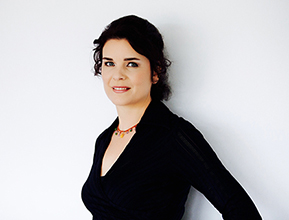“Yoga teaches us to cure what need not be endured
and
endure what cannot be cured.”
-B.K.S. Iyengar
 The stressors associated with cancer often inspire people to search for restorative techniques and self-care tools. These challenges and types of support are often physical, mental and emotional, and even spiritual in nature. Yoga and cancer becomes an essential resource when people learn about and experience the dynamic benefits of the practice.
The stressors associated with cancer often inspire people to search for restorative techniques and self-care tools. These challenges and types of support are often physical, mental and emotional, and even spiritual in nature. Yoga and cancer becomes an essential resource when people learn about and experience the dynamic benefits of the practice.
Yoga supports the body, mind, and spirit for people affected by cancer, including patients during and beyond treatments as well as caregivers. The practice of yoga offers physical, psychological, and spiritual support to the whole person. Grounded in an ancient and therefore time tested healing practice, yoga and cancer is an important area for investigation and empowerment. Yoga and cancer research also suggests a range of health benefits to the body, mind, and spirit.
What is yoga?
“The restraint of the modifications of the mind-stuff is Yoga.”
This is the classical definition of yoga translated from Sanskrit1. The essential goal of practicing yoga is to stop the constant chatter that usually occurs in the mind. This chatter includes worrying about what we said earlier that day, anticipating what will happen later, and anything else that keeps our focus from what is occurring in the present moment. For many people, the chatter becomes more challenging when dealing with cancer. The link between yoga and cancer becomes more obvious when the practice helps people cope with the chatter related to feelings such as fear and worry, as well as other body, mind, spirit challenges through the disease experience.
The traditional motivation for calming the mind in yoga is to be liberated from suffering. The ancient spiritual practice of yoga has developed guidelines for how to prepare the mind and body to reach this goal. The following ethical, physical, and mental practices are outlined in the Eight Limbs of Yoga1, 2.
Ethical Practices
1. Yamas—moral behavior
2. Niyamas—healthy habits
Willful Practices
3. Asana—physical postures
4. Pranayama—breathing exercises
Different Levels of Meditation
5. Pratyahara—sense withdrawal
6. Dharana—concentration
7. Dhyana—contemplation
8. Samādhi—liberation
In the contemporary United States, yoga classes typically focus on the physical postures, which are only one component of a traditional yogic practice. However, these postures, especially when paired with breath practices and meditation practices, often create a feeling of ease. Even if one practices yoga with different goals in mind, following the traditional guidelines can lead to perceived physical and mental benefits. These anecdotally reported benefits are gaining scientific support. The focus of yoga on the body, mind, and spirit makes it especially helpful for individuals coping with a challenge such as cancer.
What are some misconceptions about yoga?
- Flexibility is required for yoga. For anyone with physical limitations related to cancer or other medical issues, many practices taught in yoga can be adapted.
- Yoga may be contrary to Western religious beliefs. Although yoga is a spiritual practice, the techniques taught do not interfere with most religious teachings. People can even incorporate their own religion or spiritual practices into yoga.
- All yoga is the same. There are a variety of yoga styles. Teachers may choose to emphasize the traditional components differently. More specific information about finding a class will be discussed. The good news is that there is a type of yoga to suit almost everyone. Be ready for a little experimentation to figure out what works for you. The best type of yoga is yoga you will actually do!
How do I find yoga classes for people affected by cancer?
Yoga classes taught specifically for people affected by cancer are becoming increasingly common. Many medical and fitness centers offer yoga for specific populations. Check your local centers. These classes not only teach yoga, but may also serve as a great place to find camaraderie from others who are in a similar situation. The following links have additional resources for finding yoga classes for people affected by cancer.
Although it may not be possible to find a yoga class specifically for people affected by cancer that is convenient for you, other options are available. If you are still in treatment, or experiencing any challenging side effects from treatment, be cautious and ask lots of questions to find a class suited to your needs.
- Some of the websites provided here have videos available. Other videos are listed at the end of this section.
- Contact your local recreation department, yoga studio or gym. Some instructors offer private classes.
- Seek styles of yoga that are typically more gentle or are frequently adapted to help with physical challenges, including Integral, Iyengar, Kripalu, or Hatha.
- Ask about “restorative” or “chair” yoga classes available.
More important than the style of yoga, however, is the instructor. There are many yoga instructors with additional training in yoga therapy or a medical profession such as nursing or physical therapy.
General advice for starting yoga:
- Find an instructor who encourages you to accept where you are each day, listen to your body for your limits, and who will not push you to do anything that does not feel right to you.
- All styles of yoga may not be appropriate for people coping with or recovering from cancer. Take precautions. Also know that there is much to be gained from smaller as well as larger physical movements.
- It is advisable to consult with your doctor before engaging in yoga.
What are the potential benefits of yoga?
There are promising scientific study results supporting yoga as an intervention to improve psychological symptoms and quality of life in people with cancer3. These beneficial outcomes related to the mind and spirit are inherently valuable and complemented by further research exploring the physical benefits of yoga. Skills learned through yoga will likely apply to various life domains—physical, psychological, spiritual, and social. As a result, the effects of yoga may present themselves differently for each individual. There is considerable overlap with yoga and meditation research. Yoga is considered by some researchers to be a “mindful movement” and is often incorporated into meditation or comprehensive lifestyle interventions.
Research on yoga and cancer is growing. The current literature primarily consists of small pilot studies; however, one larger randomized controlled trial was recently presented at the American Society of Clinical Oncology by Dr. Karen Mustian. This study of 410 cancer survivors reported an improvement in sleep quality and reduced fatigue in participants who practiced yoga twice a week for four weeks as compared to those in standard care. Additional large randomized controlled trials are needed to conclusively demonstrate the benefits of yoga. Yet, there is some preliminary support that practicing yoga is also associated with the following.
Quality of Life
- Improves quality of life
Emotional Well Being
- Reduces stress levels
- Reduces anxiety
- Reduces depression
- Increases relaxation
Spiritual Well Being
- Increases acceptance
Physical Well Being
- Reduces sleep disturbance
- Manages fatigue
- Increases vigor
- Manages pain
- Manages nausea
- Maintains immunity levels
Studies of yoga conducted in other populations suggest that yoga may have beneficial effects on many aspects of general physical functioning such as reducing body weight, blood pressure, blood glucose level, cholesterol and inflammatory responses.
Although yoga is generally considered safe, there are some postures that are not appropriate for specific health conditions2, 4. Please consult with your physician and yoga instructor to ensure that the yoga you practice is appropriate for you.
What are some yoga exercises?
It is possible to adapt yoga for anyone. Yoga may include vigorous movement, simple in-bed movements, or no movement at all. Examples of some chair yoga exercises are provided here to give you a more descriptive idea and a practice. There are images of similar exercises available5. If you are currently in a chair and feeling physically healthy today, give them a try them as you read along! As always, if you have any question about a certain movement for you, please do not do it until you consult with your physician.
Chair Yoga Exercises (adapted from reference 6)
Before you start, find a chair and a couple of pillows. Ideally, your legs will be at a 90 degree angle with the feet firmly resting on the floor (or a pillow). Place the pillow either under your feet or under your hips to adjust for the height of your chair.
The more you practice, like any other skill, the easier it will be for you to use when it will help you the most. Remember to be kind to yourself when practicing yoga. This is yoga practice and there is no expectation for perfection.
Awareness
- Sit tall in your chair and close your eyes
- Check in with each part of the body just as it is, without changing anything (starting at the feet and moving up to the head)
- Notice what your mind is doing and your level of energy today
- Observe the natural pattern of breath moving in and out of your body
Breathing
- Notice where the body moves when you breathe
- Place your hands on your belly
- Feel the rise and fall of your palms as you inhale and exhale for a few moments
- If you feel uncomfortable stop and allow the breath to flow naturally
- Let the breath guide your movements
Movement
Use awareness to notice how your body feels as you move. There is no reason to feel uncomfortable at any time. You will receive benefit at any level of movement. Do repetitions for each exercise as many times as feels good for you today.
- Inhale as you raise your chin, exhale as you lower your chin
- Inhale as you look right, exhale to center, inhale as you look left, exhale to center
- Inhale as you tilt the head toward the right shoulder, exhale to center, inhale as you tilt left, exhale to center
- Inhale shrug the shoulders to the ears, exhale let gravity drop them down
- Inhale as you press the shoulders forward then up, exhale as they drop back and down slowly
- Alternately move the hips to walk them forward until you reach the front of the chair and then scoot them toward the back of the chair
- Cat/cow—inhale into a gentle back bend by tilting the hips then opening the shoulders and neck back, exhale into a rounded back by tucking the hips then the shoulders and neck forward
- Side/side—inhale press both of the sitting bones into the chair evenly as you reach the right arm up, then exhale the right arm over towards the left opening through both sides of the rib cage; stay here for a few breaths; then inhale the arm back up and exhale the arm down (repeat with the left arm)
- Gentle twist—inhale press the sitting bones into the chair and lengthen up through the spine, exhale twist to the right placing the right had to the right side or behind you; stay for a few breaths starting the twist at the bottom the spine and twist evenly with the head turning last; to release, inhale lengthen your back first then exhale untwist (repeat to the left)
Relaxation
- While seated in your chair, or perhaps lying on the floor or in your bed, progressively squeeze and release muscle group of the body starting with the feet
- Notice how it feels when the muscles are relaxed
- Let everything go. There is nothing you have to do. Just notice your natural breath for a few minutes (even up to 10 minutes if you like)
- Briefly check back in, noticing any shifts from the beginning of the session
Some videos that provide instruction about yoga for cancer include the following.
Gentle Yoga for Cancer Patients for a gentle class that is easily adapted for those who experience physical challenges.
Please refer to resources in the “How do I find yoga classes for people affected by cancer?” section for other examples.
What is the history of yoga?
There is no clear specific date for when yoga began. Evidence of yoga practices emerged in India from as long as 5,000 years ago4. The physical aspect of yoga practiced in the United States has been greatly influenced by the teachings of Sri Krishnamacharya and his students B.K.S. Iyengar, Pattabhi Jois, and T.K.V. Desikachar. Well-known medical uses of yoga have been influenced by Sri Swami Satchidananda through his students Dean Ornish, MD and Michael Lerner, PhD.
Recent survey data indicated that the national use of yoga in United States has increased from 5.1% of the population in 2002 to 6.1% in 20076. Approximately 13 million adults were participating in yoga in 2007. The number of people using yoga is likely still growing.
References
1. Yoga Sutras of Patanjali. Translation and Commentary by Sri Swami Satchidananda
2. Yoga for health: An introduction. National Center for Complementary and Alternative Medicine 2008
3. Smith KB, Pukall CF. An evidence-based review of yoga as a complementary intervention for patients with cancer. Psycho-Oncology 2009;(18):465-75.
4. Making Treatment Decisions Yoga. American Cancer Society 2008
5. Yoga as Medicine: The Yogic Prescription for Health and Healing by Timothy McCall, M.D.
6. Chapman J. Integral Yoga Academy: Yoga for People with Cancer Teacher Training Manual. Buckingham, VA: Satchidananda Ashram – Yogaville; 2008.
7. Barnes PM, Bloom B, Nahin R. Complementary and Alternative Medicine Use Among Adults and Children: United States, 2007. CDC National Health Statistics Report #12 2008.
Last Modified: Feb 12, 2012
Date Authored: July 29, 2010
About the Author
 Stephanie Sohl is a Research Instructor in the Department of Medicine, Vanderbilt-Ingram Cancer Center Member, mind-body researcher, yoga instructor and integrative health coach. She earned her doctorate in Social and Health Psychology from Stony Brook University and completed postdoctoral fellowships in Cancer Prevention and Control at the Mount Sinai School of Medicine and Wake Forest School of Medicine. In addition, Dr. Sohl has a Registered Yoga Teacher certification through a Kripalu-affiliated school, completed the Urban Zen Integrative Therapy Training, Adapting Yoga for People with Cancer Teacher Training at Integral Yoga, and Duke University’s program in Integrative Health Coaching. Dr. Sohl specializes in teaching yoga to people who are coping with cancer with a particular interest in adapting yoga to be implemented in the clinical setting. Her research focuses on investigating the efficacy of mind-body interventions for reducing cancer-related symptoms and optimal measurement of related outcomes and mechanisms.
Stephanie Sohl is a Research Instructor in the Department of Medicine, Vanderbilt-Ingram Cancer Center Member, mind-body researcher, yoga instructor and integrative health coach. She earned her doctorate in Social and Health Psychology from Stony Brook University and completed postdoctoral fellowships in Cancer Prevention and Control at the Mount Sinai School of Medicine and Wake Forest School of Medicine. In addition, Dr. Sohl has a Registered Yoga Teacher certification through a Kripalu-affiliated school, completed the Urban Zen Integrative Therapy Training, Adapting Yoga for People with Cancer Teacher Training at Integral Yoga, and Duke University’s program in Integrative Health Coaching. Dr. Sohl specializes in teaching yoga to people who are coping with cancer with a particular interest in adapting yoga to be implemented in the clinical setting. Her research focuses on investigating the efficacy of mind-body interventions for reducing cancer-related symptoms and optimal measurement of related outcomes and mechanisms.





